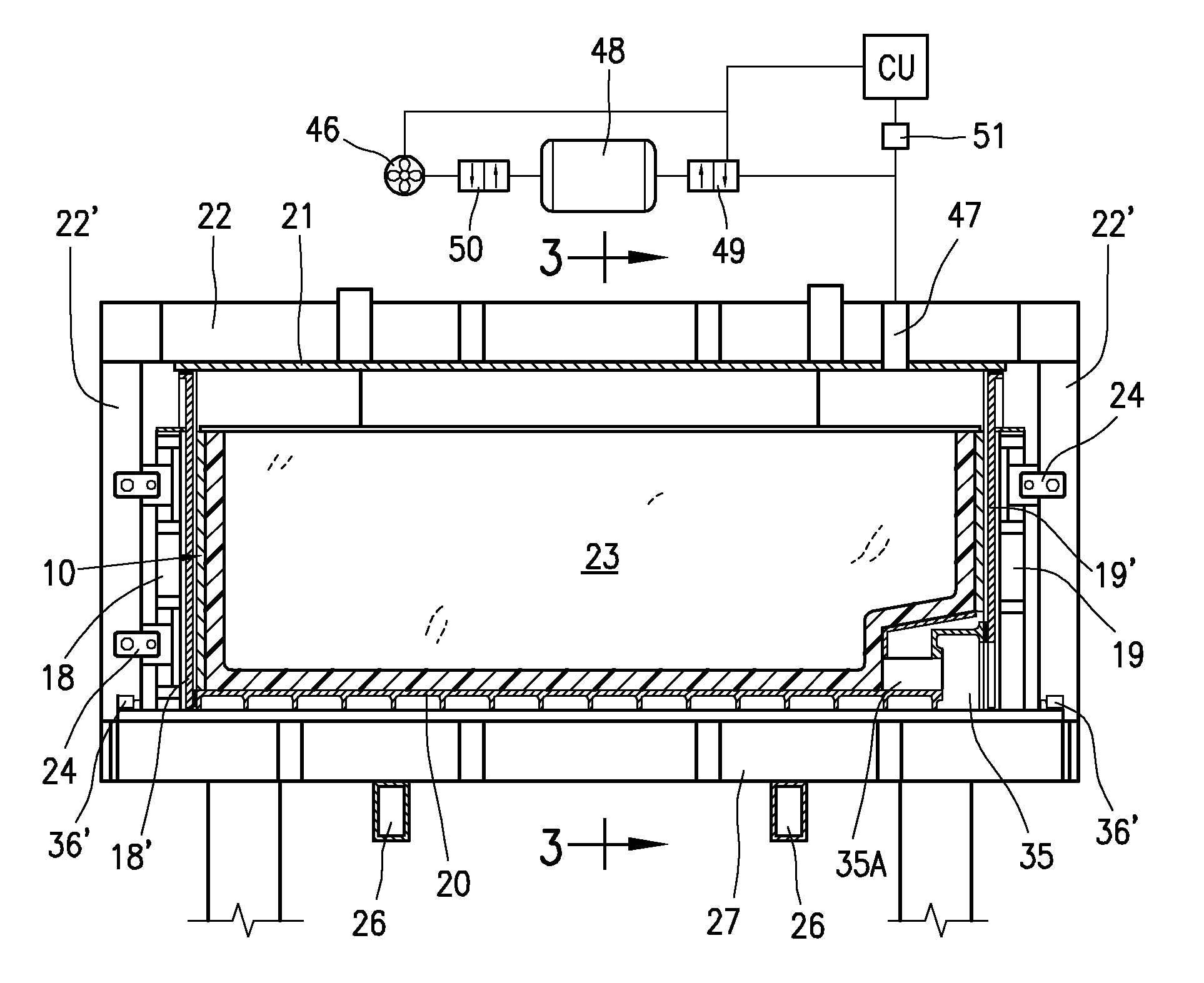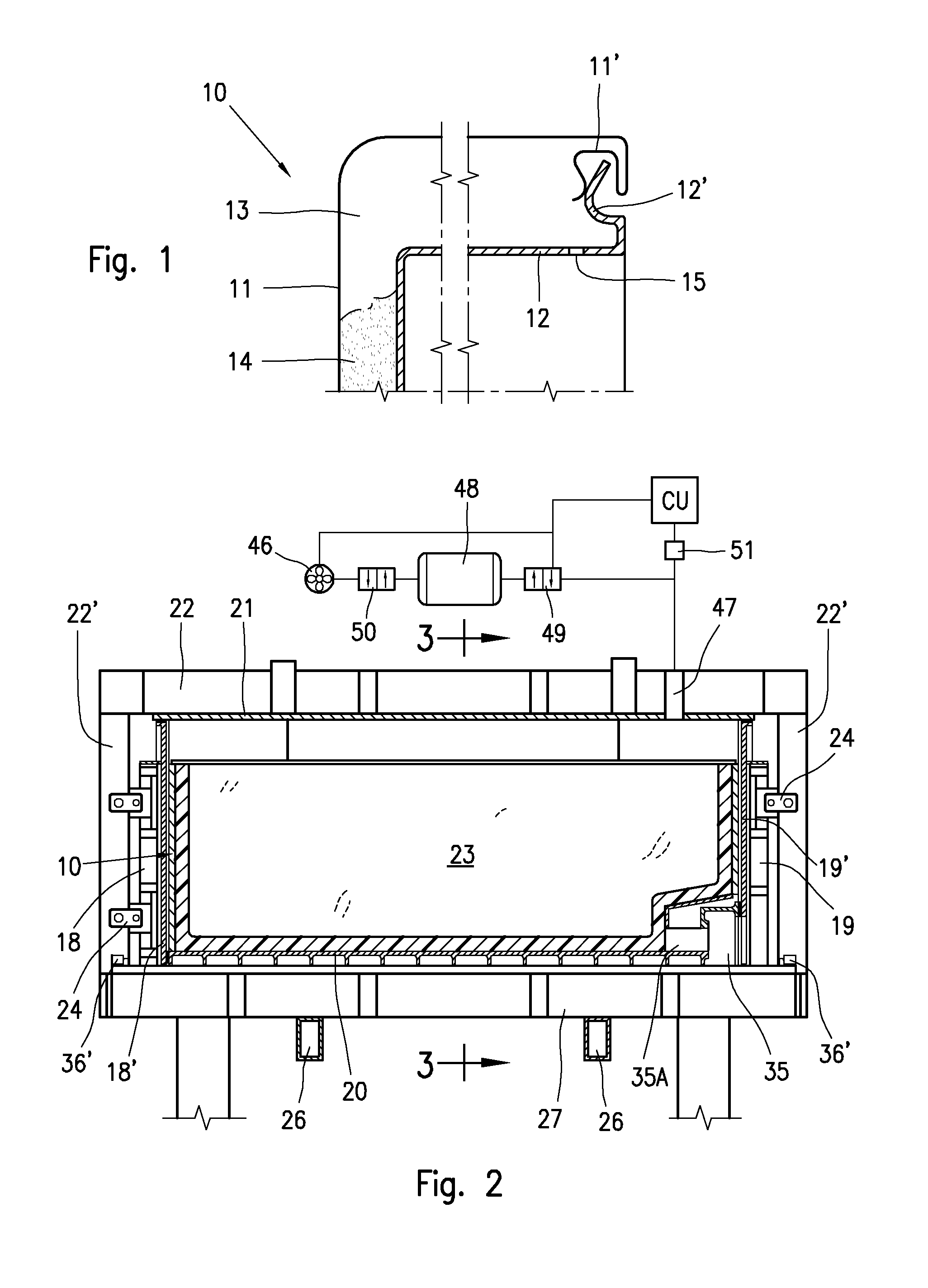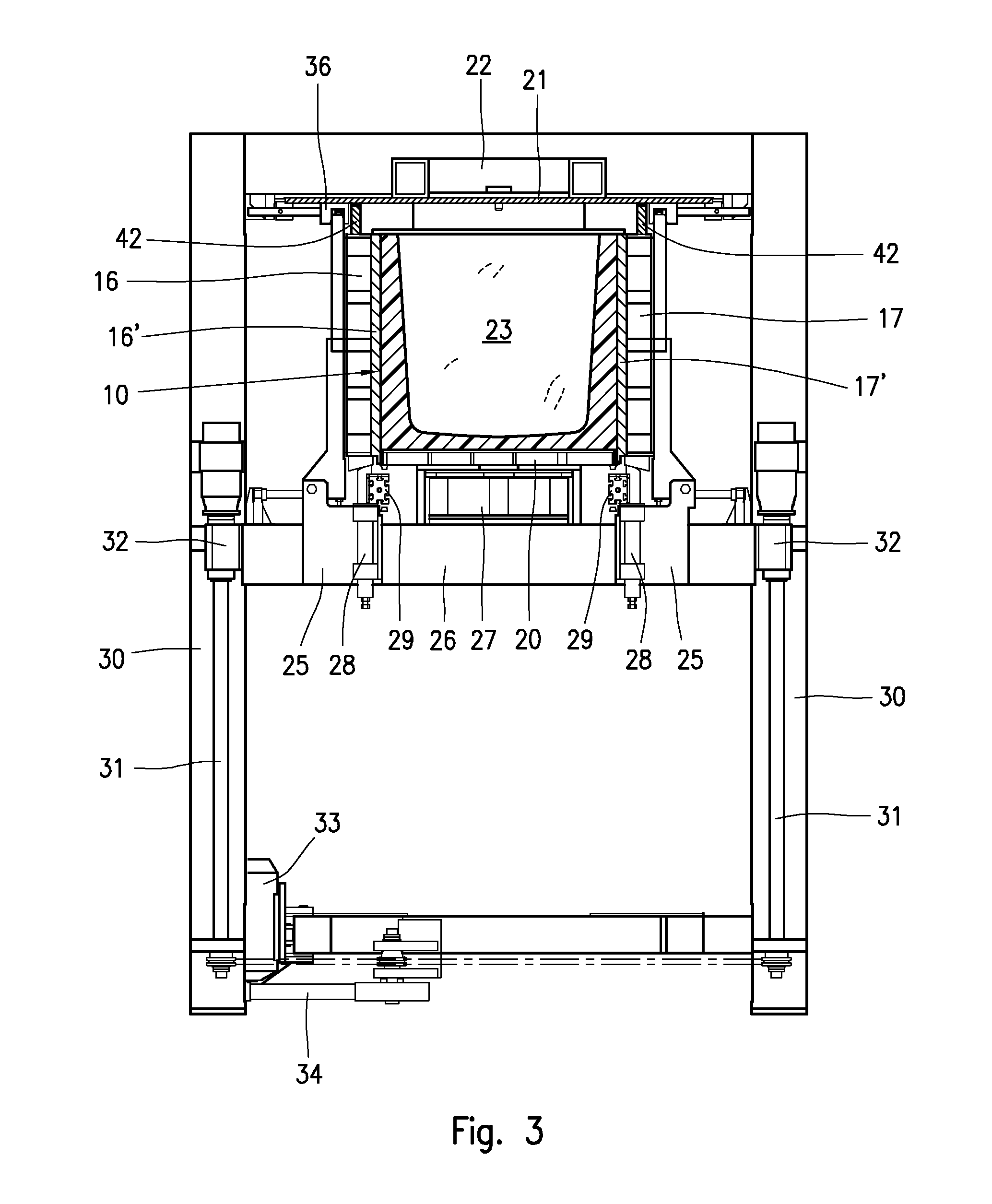Vacuum-assisted foaming method and apparatus for moulding insulation of refrigeration containers
- Summary
- Abstract
- Description
- Claims
- Application Information
AI Technical Summary
Benefits of technology
Problems solved by technology
Method used
Image
Examples
Embodiment Construction
[0033]The invention will be now explained making reference to the foaming under vacuum condition of a refrigeration container consisting of the cabinet for a refrigerator, being understood that what will be described for a refrigerator cabinet, will be valid also for any type of refrigeration container of the type previously referred to.
[0034]FIG. 1 shows, by way of example, the upper part of a refrigerator cabinet 10, comprising an external metal shell 11, and an internal shell 12 obtained for example by thermoforming sheets of plastic material, or by shaping metal sheets.
[0035]The two shells 11 and 12, as shown in the detail of FIG. 1, have their peripheral edges 11′ and 12′ duly shaped and engaged with each other, to maintain the shells 11 e 12 in an assembled condition in which they define the hollow walls 13 of the refrigerator cabinet 10. In a manner per se known by a suitable foaming process, a metered quantity of a liquid polyurethane mixture is injected into the hollow wall...
PUM
| Property | Measurement | Unit |
|---|---|---|
| Pressure | aaaaa | aaaaa |
| Vacuum | aaaaa | aaaaa |
| Compressibility | aaaaa | aaaaa |
Abstract
Description
Claims
Application Information
 Login to View More
Login to View More - R&D
- Intellectual Property
- Life Sciences
- Materials
- Tech Scout
- Unparalleled Data Quality
- Higher Quality Content
- 60% Fewer Hallucinations
Browse by: Latest US Patents, China's latest patents, Technical Efficacy Thesaurus, Application Domain, Technology Topic, Popular Technical Reports.
© 2025 PatSnap. All rights reserved.Legal|Privacy policy|Modern Slavery Act Transparency Statement|Sitemap|About US| Contact US: help@patsnap.com



